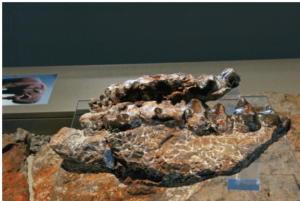Some of the most spectacular fossil deposits of the European Tertiary are former maars located in old volcanic field areas. The Tertiary volcanic field of the High Eifel (THV) lies between the two Quaternary volcanic fields of the West and East Eifel and extends far into the West Eifel. The Eckfelder Maar lies on the […]
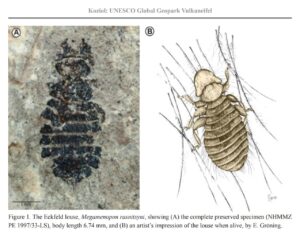
The Fossil Forest of the Aragoncillo Range is one of several paleontological sites of exceptional scientific value in the Sierra de Selas (Province of Guadalajara, central Spain). This shows an accumulation of silicified tree trunks along with well-preserved macro- and microflora of lower Permian age. This ancient forest, dominated by tree ferns and conifers, was […]
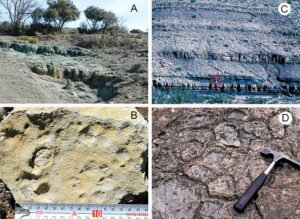
The Sobrarbe-Pirineos UNESCO Global Geopark, located in the Central Pyrenees, is a region of remarkable geodiversity that includes extensive Eocene fossil-bearing sites and constitutes an important archive of paleobiodiversity. The Sobrarbe-Pirineos Geopark hosts outcrops of Eocene formations bearing an unusual abundance and diversity of fossils from marine and continental sedimentary environments, making the Sobrarbe-Pirineos Geopark […]
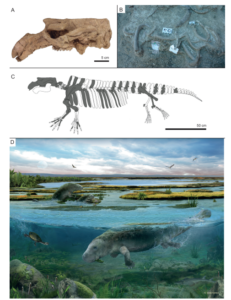
The iconic Kupferschiefer is a stratigraphic marker horizon of the Upper Permian in Northern and Central Europe, which is recognized internationally as a unique stratum because of its outstanding preservation of fish, reptile, and plant fossils. In the UNESCO Global Geopark TERRA.vita, Kupferschiefer fossils have been found at three tectonically uplifted elevations: Hüggel, Schafberg, and […]
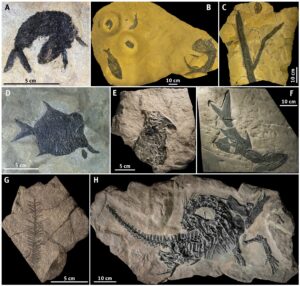
The “phosphatières du Quercy” are karstic fillings exploited for phosphate at the end of the 19th century. They yield countless continental fossils through some 30 million years, ranging from late early Eocene to early Miocene. This exceptional paleontological series documents the ‘Grande Coupure’, a major biogeographical event involving a profound renewal of vertebrate faunas, recorded […]
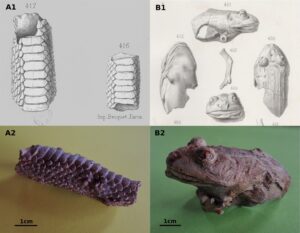
Some of the most interesting paleontological heritage of the Liguria Region is in the Beigua UNESCO Global Geopark, in Savona Province. The Geopark is characterized by high geodiversity and strong tourist traffic, being easily accessible and already having geological and paleontological visitor centers. The geosites of Stella Santa Giustina (SSG) and Maddalena–Ponte Prina (MPP) are […]
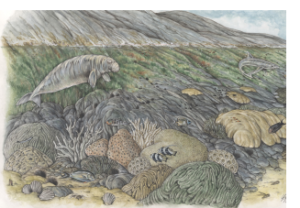
The Luberon early Oligocene fossil Lagerstätte yields exquisitely well-preserved fossils as testified by the remains of articulated skeletons, skin outlines, feathers and original pigmentation patterns. The fossils include plants, insects, amphibians, reptiles, birds and mammals from ancient lacustrine-terrestrial ecosystems of the early Oligocene. The fossil birds are especially important, including one of the most complete specimens […]
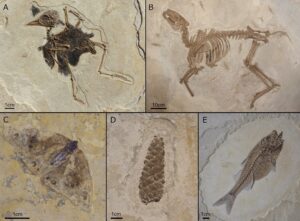
Trace fossils represent an important component of the Earth’s heritage that provide important keys for learning about the diversity and evolution of life and environments through time. They represent a rich and fragile geoheritage that requires special geoconservation measures. The Saignon tracksite, yielding thousands of tracks attributed to mammals, is located in the heart of […]
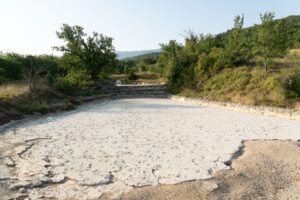
The transnational Novohrad-Nógrád Geopark situated in Northern Hungary and Southern Slovakia has several important Neogene fossil sites developed for geotourism. One of them is the lower Miocene paleontological locality complex at Ipolytarnóc , which has been well known since the middle of the 19th century. The site is the main geotouristic gateway to the geopark, […]
The Petrified Forest of Lesvos is a Protected Natural Monument showing standing and lying petrified tree trunks, preserved by intense volcanic activity in the early Miocene. The Natural History Museum of Lesvos Petrified Forest contributed significantly to scientific research, conservation, exhibition, promotion and international recognition of the Lesvos Island UNESCO Global Geopark, a founding member […]
